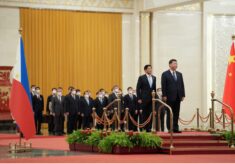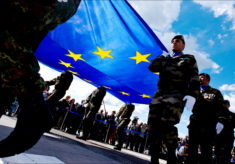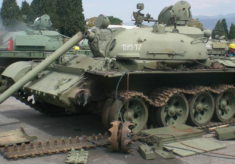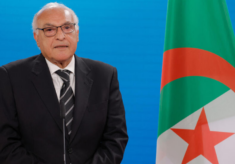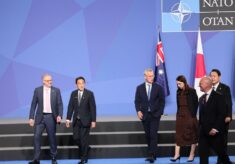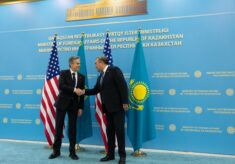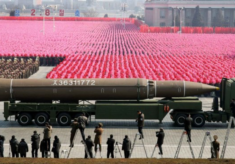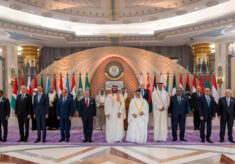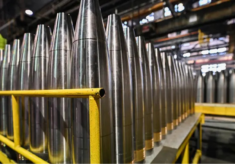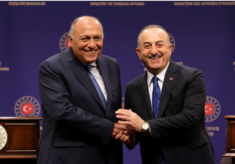Starting from the early nineties, for about two decades, the Czech Republic, Hungary, Poland and Slovakia pursued membership and then a proper place in the Euro-Atlantic structures as a matter of strategic priority. Their strive became a source and an essential component of what was seen as a major geopolitical shift – indeed the re-unification of Europe. It was in this context that the Visegrad Group was established in 1991 as a sub-regional platform for the four states to combine forces.
In recent years, the initial enthusiasm of the four has transmuted into a complex mood, involving disenchantment with and even some enmity towards the outcome of the choice made a generation ago. Many people in the sub-region certainly do share the fears, doubts and disillusionment present elsewhere in Europe and the West as a whole. What is more, they appear receptive to the populism, nationalism and even tribalism surging in their own countries, which have not had all the time to fully entrench resilient independent institutions and civic activism. As a result, politics in the sub-region often appear as top-heavy, denoting authoritarian features.
At a closer look, the four countries share extensive similarities, providing a lasting base for the Visegrad cooperation, anchoring it in the Western structures. It might be surprising, but Poles and Hungarians rank among the strongest supporters of the EU (and NATO). Even Czechs (who remain the most euro-sceptic among the four) have been warming up to the EU lately. There is sustained economic growth in all the four countries. Germany is by far their largest trade and investment partner, followed by other states in Europe and the US – the main security provider. Given the above popular attachment and economic-political realities, the EU and NATO are to stay as the pivots for the Visegrad four. No policy openly challenging this orientation would have any chance to succeed, at least in the short term.
At the same time, there are distinctive features and also growing differences among the four countries themselves, putting a limit to the scope of their cooperation. On the one hand, Hungary is seen by many as the most salient example of “illiberal democracy”, where the Fidesz party’s long-standing predominance has sapped pluralism and disfigured most of the independent institutions. Poland appears to evolve in the same direction, albeit in a more instinctive and less systemic manner. Both Kaczynski and Orban claim to foster national sovereignty and defend Christian values, opposing “Brussels” and what they label as the Western decadent model.
Some authoritarian and populist designs have made to the top also in Czechia and Slovakia. But these countries are governed by coalitions based on bargains around rather pragmatic choices. The electoral victory of Babis in Czechia has not brought about an illiberal drift. In Slovakia, the impact of Ficzo’s occasional mishaps and the Slovak National Party’s government participation stays limited. In both countries, the system of checks and balances and the constitutional framework remain rather solid. Although Slovakia (the only Visegrad member of the Eurozone) and the Czech Republic utter strong critiques vis-à-vis the European institutions, they seem disposed to play along productively.
It is in these framework conditions, that the migration crisis has brought to the surface that there is a distinct tradition and worldview in the four countries, revealing the divide between many (if not all) Central Europeans and the (somewhat dwindling) “mainstream” EU. Hungary’s high fence and flat “nyet” were received with sympathy by all Visegrad partners. This reaction has not only given new energy to the commonality of the four; it will probably remain the chief galvaniser of their continued joint action, originating in a matter highly relevant for solidarity and other basic values.
Visegrad’s cohesion is however much more difficult to sustain, when it comes to foreign and security policy. Russia, China and other major players are keenly aware of the specifics in Central Europe and the opportunities this might offer. As much as migration amalgamates the four, the challenge presented by Russia divides them. In the area of defence and security, Poland is anyway in a category apart from the others, being a sizable NATO member and close ally of Washington. Warsaw has developed both clarity and action, responding to the need for resisting Russian revanchism and expansionism. It has done a lot to reduce economic and energy exposure to Russia and keeps distance with Putin. Hungary – so close to Poland in other fields – on the contrary, combines large energy and financial exposure to Russia with intense, even intimate high-level engagement with it. Moreover, Budapest seems inclined to policy gestures and even catering to Russia, China and other non-Western players, including by confronting or blocking common EU positions. Slovakia is also attentive to Russia, being heavily dependent on Russian energy supplies. Czechia in it turn – notwithstanding the pro-Moscow utterances by President Zeman – seems fully aware of the nature and the danger brought by Russian incursions. Poland and Czechia have made significant efforts to combat Russian penetration, covert activities and hybrid warfare.
China is already a large trade partner and a non-negligible source of finance for the countries of the sub-region, which show varying interest towards Beijing-sponsored initiatives. For China, the Visegrad region seems (at least for the time being) a secondary theatre, a building-block for Europe-wide designs, not a target fully in its own right.
To resume, there is no doubt that the Visegrad sub-region is at a crossroad, facing questions not dissimilar to those confronted by the whole of Europe. Forthcoming elections and important political decisions in Brussels, Washington, Berlin, Paris and elsewhere will be decisive in shaping the dispute about populism and the future of European (Western) integration. We can only hope that the orientation of the four in Central Europe will be compatible with the broader trends followed by the EU and NATO. Some of the emerging trends in the sub-region can prove fecund, others appear to merely exacerbate the turmoil. As we look forward, one can envisage several (partially interlocking) scenarios. Some countries (Hungary and possibly Poland) might advance further and join others in their national-populist plight, confronting the proponents of further European integration. In the opposite scenario, rejection and isolation of Central European populism, could lead to more open reliance on support coming from elsewhere (Russia being an obvious option, albeit not for Poland.) This would fragment the Visegrad Group – Slovakia is already set on a journey towards the inner circle of European integration. Thirdly, in the medium term, one cannot exclude the resurgence of a pro-integrationist majority in several countries – as many citizens would desire.
In any case, whatever scenario we expect, the sub-region deserves not only scrutiny, criticism and vigilance but also understanding and flexibility. Sustained bonds of engagement might prove on the long term more conducive than mere reprimand. Europe, including the peoples of the Visegrad countries, will gain a lot if we all find the right course of action.
Giovanni Soligo

